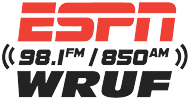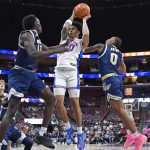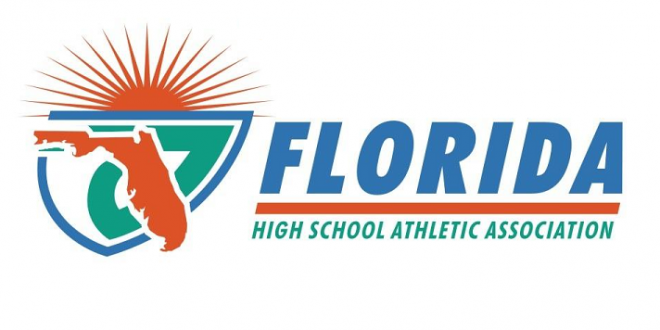
Feature: Concussions in Gainesville-Area High School Football
In an instant, everything can change. In one second a high-school football player can be well on his way to a scholarship, and in the next second, it can slip through their hands like smoke in the air. But the players know the stakes; after all, anything worth achieving always requires risk. In high school football that risk too often involves detrimental head injuries such as concussions.
According to the Center for Disease Control 1.6 to 3.8 million concussions occur in sports and recreational activities annually. That number has increased by 16% annually from 1997-1998 to 2007-2008, according to a 2011 study done by the Sports Medicine Research Center in Baltimore, Maryland. With an increase in concussion diagnoses, it is no surprise that coaches and officials are taking action.
https://twitter.com/RAWE_RECRUITS/status/1162514124674359296?s=20
Local action
RJ Fuhr is the head coach of the Oak Hall High School Eagles in Gainesville, Florida. Fuhr also serves as the Dean of Students to the school, where he can see the academic side of a student-athlete. In his 14 seasons as a football coach Fuhr has found innovative ways to protect his players from concussions.
“We’ve been teaching the ‘hawk tackling method’ since 2014,” said Fuhr. “The ‘hawk tackling method’ was started by Pete Carroll and the Seattle Seahawks, and that’s where the name came from. It basically takes the head out of the tackle.”
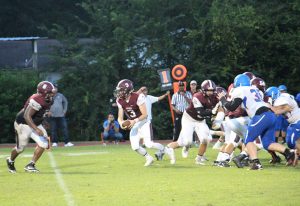
Tackling with the helmet is a common way that concussions occur in football, but Fuhr is not naive. Taking the helmet out of the tackle cannot insure a player is not hit in the head during play. This is where the Riddell SpeedFlex comes into play.
“We use the Riddell SpeedFlex helmet. It has sensors in it that can alert the trainers to where the contact is being made on the helmet,” said Fuhr. “If we have a lot of reports from John Smith that he’s getting a lot of contact on the helmet we can look at the film and say, ‘OK, we need to work on your tackling.'”
Fuhr, as the Dean of Students, gets a close look at how concussions can affect his players in the classroom. According to Fuhr, teachers can give special accommodations to players in the concussion protocol.
“We’re very wary that [athletes are] in concussion protocol,” said Fuhr. “That not only means that they can’t participate in football, but they’ve got to take it slowly from an academic side.”
FHSAA action
Technology, while innovative and exciting, misses part of the issue at large. Some of the issues surrounding concussions come from a policy standpoint. The Florida High School Athletic Association has worked to introduce policy that increases awareness and safety for players.
In 2012 the FHSAA adopted “Policy 40,” which was a comprehensive reform of concussion diagnosis and player treatment before returning to the field.
According to FHSAA policy 40.1, any player that, “exhibits signs, symptoms, or behaviors consistent with a concussion … shall be immediately removed from the contest or practice and shall not return to play until cleared by an appropriate health care professional.” Also, players who are suspected of having a concussion must be removed from practice even if symptoms have not appeared.
When contacted about up-to-date concussion policy, FHSAA director of membership and contract management J.A. Colasanti deferred to their 2019 coaching manual. This manual instructs coaches on how to conduct practices in a safe manner. Limiting contact drills to three practices a week for no more than 30 minutes per practice aims to reduce the risk of concussions. To insure coaches are following these guidelines, FHSAA policy 40 threatens a maximum one-year suspension for coaches that are found to not have adhered to it.
From an athletic trainer’s perspective
The FHSAA also laid out clear guidelines for diagnosing concussions in Policy 40. According to Oak Hall athletic trainer Ben Goc, those guidelines are standard and thorough.
“Concussions are not black or white, there is a lot of gray area,” said Goc. “So we basically use a multiple tool approach. The first step would be to rule out any serious injury…Secondly, you go through a symptom checklist. I use the SCAT-5 form, which is a baseline exam.”
FIFA and the International Olympic Committee use the Sports Concussion Assessment Tool 5 as their standard concussion protocol. It is safe to say that the SCAT5 is a trusted tool to help diagnose a concussion in the sports medicine industry.
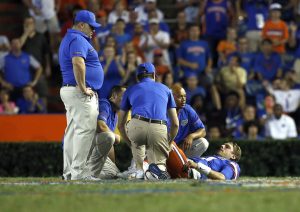
According to Goc players take baseline tests at the beginning of the season on a computer. These tests check for reaction time and memory capabilities. If a trainer suspects a player has suffered a concussion, they then go back to this test and compare their scores to the control test.
Raising awareness
Precautions such as high-tech helmets and standardized practice procedures are a step in the right direction for concussion prevention. If increased awareness of the potential dangers of concussions is the goal, then the FHSAA has its work cut out for them.
In an email correspondence about any current outreach programs for concussion awareness, FHSAA Associate Executive Director for Athletic Services, Justin Harrison, replied, “We have not taken any steps outside of what is listed in Policy [40].”
The FHSAA has taken steps in the past to raise awareness for concussions in sports. In 2012 it mandated all student-athletes and coaches in the State of Florida to watch a free 30-minute video on concussions published by the National Federation of High Schools.
Raising awareness is one of the first steps to combating problems in society. Changes in concussion policy and actions by local football coaches will be the cornerstone of more change in the sport.
Category: Feature Sports News, High School Sports
